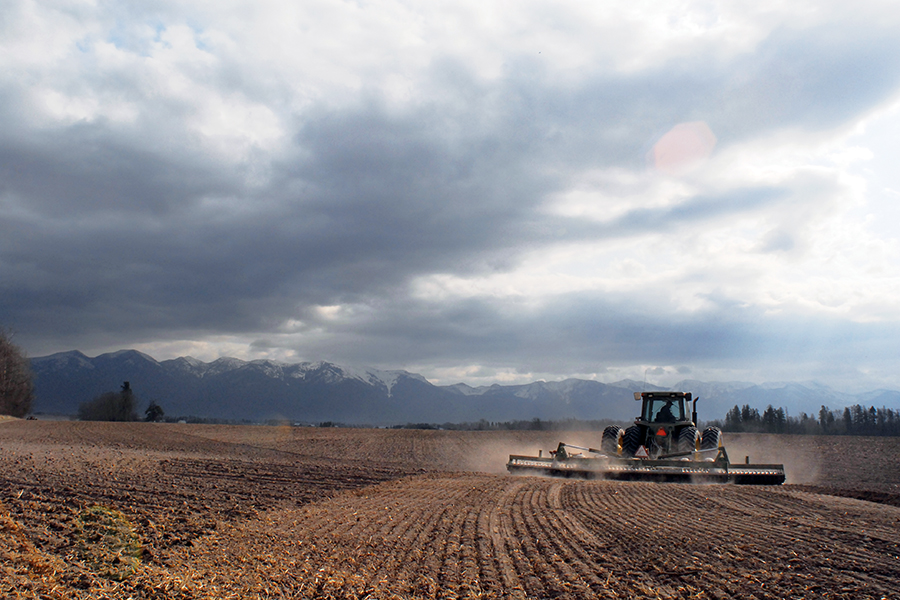The middle of the calendar year is an interesting time for many industries, because most business fiscal years end in July, and second quarter numbers start to trickle in. For farmers and ranchers in Montana, the middle of the year is growing season, filled with dirt, sunshine and hard work.
About 150 to 200 people involved in agricultural fields took time out of their busy schedules to visit Kalispell last week for the Montana Farm Bureau Federation’s summer conference, which ran June 10-12.
The conference is a vital time to talk to federation members, which number roughly 21,000 across the state, about the pressing issues they see in their communities and how they want MFBF policy shaped.
According to MFBF president Bob Hanson, a rancher from White Sulphur Springs, the federation has 14 different advisory committees on issues ranging from equine health to water rights, and there are 10 different districts across the state.
They try to get a farm bureau member from every district on every committee, he said, and then they look at policy. If the MFBF isn’t covering it, or if it needs to be modified, they bring the changes to the county level, and then to the state.
That policy book is the basis for the MFBF work at the state Legislature, Hanson said, and the farm bureau is larger than all the other agriculture groups in the state put together.
“It’s truly grassroots from the ground up,” Hanson said last week. “We spend a good chunk of our money on legislative activities.”
With such a large group, the farm bureau has considerable clout at the legislative level, Hanson said. Farmers and ranchers being involved in lawmaking is important not only for keeping a business afloat, he said, but also when it comes to dealing with environmental protection laws, water rights, and other issues farms may face.
On June 11, the conference attendees broke into groups to learn about the latest news and advances in agriculture, and then went into their committees to discuss policy changes.
Groups met about livestock and animal health, which included information on changes in antibiotic uses; taxation, wheat, small grains, forage and weeds, which went over agricultural land values and herbicide resistance, as well as an update on railroads and agriculture.
The natural and environmental resources and water committees heard updates about the state Fish, Wildlife and Park’s block management program, which Alan Charles of FWP presented.
One of the main topics of discussion was a recent legislative audit on FWP, and the so-called “double dipping” of the conservation easement program and the block management program.
With conservation easements, the state buys certain rights, such as subdivision or development, from landowners, Charles explained, but it does not buy the access rights.
The block management plan pays landowners a fee for letting the public hunt on their land, and that money goes toward mitigating hunter impacts on the land, he said.
Charles said he believed it is appropriate for FWP to layer the two programs, because it gives landowners complete compensation for using their land.
“We don’t agree with that audit finding,” he said.
Tim Davis of the Montana Department of Natural Resources and Conservation spoke about the state water plan, which was initiated by the 2009 Legislature and will likely be sent to the 2015 Legislature for approval.
When the water plan was started, the state created four basin advisory committees to gather information on water usage, Davis said, and people who work in agriculture represent about 40 percent of those committees.
Now that about five years of scoping work is nearly finished, Davis said the DNRC would start giving notice for public meetings on the final document in September, and hold those meetings in October and then send the plan to the Legislature in January.
When it comes to water rights, conference attendees learned about a new online tool that has aggregated all of the information from DNRC and all of the land ownership information from Montana Cadastral and made it user friendly.
A rancher, farmer or potential landowner can go online to Water Sage and access a map of Montana. From there, they can search for information by name, water right number, or even just by drawing a square on the map and learning about all the water rights contained therein.
Users can even see who holds which type of water right, and can see the rights that can be called and the rights that can be called on them.
It will help farmers and ranchers keep and eye on their holdings, Colleen Coyle of Ponderosa Advisors LLC said, and make it easier for those seeking to purchase land to understand what they are buying.
Coyle said Water Sage should have all the water rights from all the western states mapped out by the end of next year, but currently all of Montana and Wyoming are available.
For more information, visit www.watersage.com. For more information on the Montana Farm Bureau Federation, visit www.mfbf.org.
